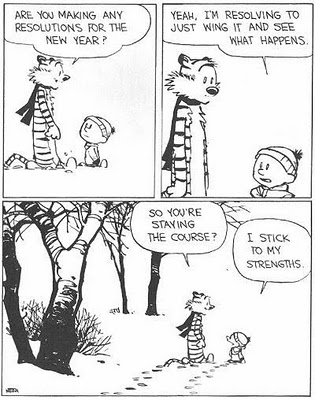
by Fronetics | Dec 30, 2013 | Blog, Leadership, Strategy, Talent

career resolutions
After the ball has dropped and after the champagne has been drunk, the New Year will begin. Forty-five percent of Americans will start the New Year with at least one resolution. Whether or not you are typically a resolution-maker, the New Year is a great time to evaluate your career and set goals.
Here are nine career resolutions everyone should make.
Get out of dodge
If you are miserable in your job take the time to sit down and determine why you are unhappy. If you are unhappy with your current position but you like your company, reach out to your boss and/or HR and determine if there is another position within the company that would be a better fit. Finding a new opportunity within your current company is often easier and quicker than finding an opportunity at a new company. However, if your current company is not a good fit or if there are no growth opportunities, find a new job. Just like there are other fish in the sea, there are other jobs out there.
If you decide it is time to find a new job, use all tools at your disposal. For example, network, brand yourself, use a recruiter, and/or work with an executive search firm.
A word of caution – find a new job before you quit your current job. Finding a job can take time.
useful reference Official statement Wiht 50% Discount The Best Quality lob wig With The Best Cheap Price , Up To 50% Off Why not check here hop over to these guys buy hublot , A wonderful gift for a good man is luxury Dig this see this website Great paintings of flowers by famous artists With The Best Cheap Price , her explanation short curly lace front wi More Help . , click this link here now straight blonde wi hop over to this site Basics anchor .
Network, network, network
I recently wrote about the importance of networking and quoted Kathryn Minshew, founder and CEO of The Muse and The Daily Muse. who offered this sage advice: “Network Your Face Off.”
Why network? A recent study found that a 50 percent increase in network size accompanies a 3.8 percent increase in salary with respect to the average. Studies have also found that the majority of jobs (between 49 percent and 80 percent) are landed through networking. Networking also brings opportunities that benefit and feed your career, professional development, and personal interests. What’s more, networks make you happier and smarter.
Brand yourself
Like it or not, you are a brand. First impressions are no longer face to face. Rather, first impressions are now comprised of information which can be gathered via a quick search of the Internet. A first impression can be, for example, inclusive of your LinkedIn and Facebook pages, your personal blog, your Instagram page, your Twitter account, your Klout score, your pins on Pinterest, and anything else that may have made itself onto the Internet. Because of this, that 7 seconds you used to have to make a first impression when you enter the room is gone – chances are that the first impression was made long before you arrived. The reality is that when you walk into that room you are likely being evaluated against the first impression that was made prior to your arrival.
If you want to be successful you need to take steps to build and enhance your brand.
Work for someone smart
Dara Khosrowshahi, CEO, Expedia, Inc., believes that there is one constant: great, smart people stay great and smart. Because of this he recommends “find[ing] the smartest and most competent person around you and work[ing] for that person. It doesn’t matter if the move is lateral, down or up. Just get yourself working for that great person. Don’t ask for much; just work your ass off.” Why? Khosrowshahi points out that by doing this you will learn a lot, be challenged, and you will grow both as a person and as a professional. Moreover, “smart people tend to get promoted. When they get promoted, you’ll tend to follow them as they rise in the ranks (assuming you’ve done a great job).”
Optimize for the next 1 to 2 years
Don’t get hung up on mapping out a five or 10 year career plan. Instead, optimize for the next one to two years. Khosrowshahi, again, offers words of wisdom: “Look for the right opportunities, stay flexible, have some idea of what direction you are headed in, but don’t lock into a long-term direction because chances are that the world will change up on you.”
Get active
Exercise not only improves your health, but research has also found that a regular exercise routine can make you happier, smarter, and more energetic.
And interested in a leadership position? The Wall Street Journal reported that data compiled by Center for Creative Leadership found that “Executives with larger waistlines and higher body-mass-index readings tend to be perceived as less effective in the workplace, both in performance and interpersonal relationships.”
Try something new
Not only is the world always changing, but there is also a big bog world out there – a world full of opportunity. Look at the technology used by your colleagues and your competitors. Is there something they are using that you aren’t? LinkedIn or Twitter for example. What about something new and exciting outside of the office? Is it time to give skydiving a try?
Trying something new requires courage. You will find that courage begets courage. You may also find something new you enjoy.
Work-life balance
Research by the Families and Work Institute found that 55 percent of respondents reported feeling overwhelmed with the sheer amount of stuff on their plate. A survey conducted by Monster found that 80 percent of respondents are not happy with their work-life balance.
Are you happy with your work-life balance? If you are not, take stock of what is on your plate. Write a list of your priorities. What can you eliminate, shift, or even outsource to find better balance?
Take a vacation
57 percent of American’s don’t take their vacation time. Each year there are 175 million vacation days which American workers are entitled to which are not taken.
Taking time off is important to both your mental and physical health. Taking time off is also has a positive impact on work performance and productivity. For example, a 2011 Harvard Medical School study found that sleep deprivation costs American companies $63.2 billion a year in lost productivity. Ernst & Young offers another example. In 2006 the company conducted an internal study of its employees and found that for each additional 10 hours of vacation employees took, their year-end performance ratings from supervisors (on a scale of one to five) improved by 8 percent. What’s more – retention rates were significantly higher among vacationers.

by Fronetics | Dec 24, 2013 | Blog, Leadership, Logistics, Strategy, Supply Chain

Thank you: Two Powerful Words
I have two young children. One of the values in which I am trying to instill is that of graciousness. A couple weeks ago I sat down with my daughter so that we could write thank you notes for the gifts she received for her third birthday. My five-year old sauntered by and made the comment that what we were doing was: “just plain silly because no one else ever writes thank you notes.” He got part of it right – very few people do write thank you notes. What he didn’t get right is the silly part. Taking the time to say thank you and show appreciation is not silly and is not passé. Rather, taking the time to say thank you is critical not only to your success, but also to your well-being. “Thank you;” two powerful words.
Research published in the Journal of Personality and Social Psychology found that a mere “thank you” more than doubled the likelihood that those providing help would provide assistance again. The research also found that a ‘thank you” yielded an increase of 50 percent in terms of productivity and an increase of 15 percent in the average amount of time a person spent providing assistance. The researchers also noted a spill-over effect. That is, gratitude begets gratitude.
Why is a simple “thank you” so powerful? The researchers found that expressions of gratitude increased feelings of both self-efficacy and social worth. They also found that it is the feeling of being socially valued more than the feeling of competence that encourages people to provide more help in the future. In short, people like being acknowledged and valued for our efforts.
While there is rationality at play here, Peter Bregman, CEO of Bregman Partners, Inc., believes “[S]aying ‘thank you’ is mostly an emotional act. It connects one person to another. Saying ‘thank you’ doesn’t just acknowledge someone’s effort, thoughtfulness, intent, or action. It acknowledges the person himself.” Why does this matter? Because, Bregman continues: “Acknowledging each other is our basic responsibility as human beings living in community with other human beings.” Mary Kay Ash, cosmetics entrepreneur, puts it another way: “There are two things people want more than sex and money: recognition and praise.”
Acknowledgement, recognition, praise, expressions of gratitude – what is incredible is that these don’t need to be achieved via an extravagant and expensive gift, rather they can be achieved, for free, with two words – “Thank you.”
In an article on the value of networking Kathryn Minshew, founder and CEO of The Muse and The Daily Muse, calls attention to the fact that people are more likely to give opportunities to those who are most in their recent memory. Given this, she offers the following advice: “Be the person they saw yesterday as often as possible.” What Minshew leaves out is that that last memory needs to be a positive one. A simple and effective way to leave a positive memory – say, write, or type “thank you.”
Robert Eckert, former chairman and CEO of Mattel, offers the following tips on expressing thanks within the workplace:
- Set aside time every week to acknowledge people’s good work.
- Handwrite thank-you notes whenever you can. The personal touch matters in the digital age.
- Punish in private; praise in public. Make the public praise timely and specific.
- Remember to cc people’s supervisors. “Don’t tell me. Tell my boss.”
- Foster a culture of gratitude. It’s a game changer for sustainably better performance
- Acknowledgement, recognition, praise, a simple “thank you.”
I offer up a challenge to you. Over the next week take the time to say thank you, to acknowledge others, to praise, and to show your appreciation. My guess is that you will be both surprised and impressed by what and where two little words will get you – so much so that you’ll make thank you second nature.
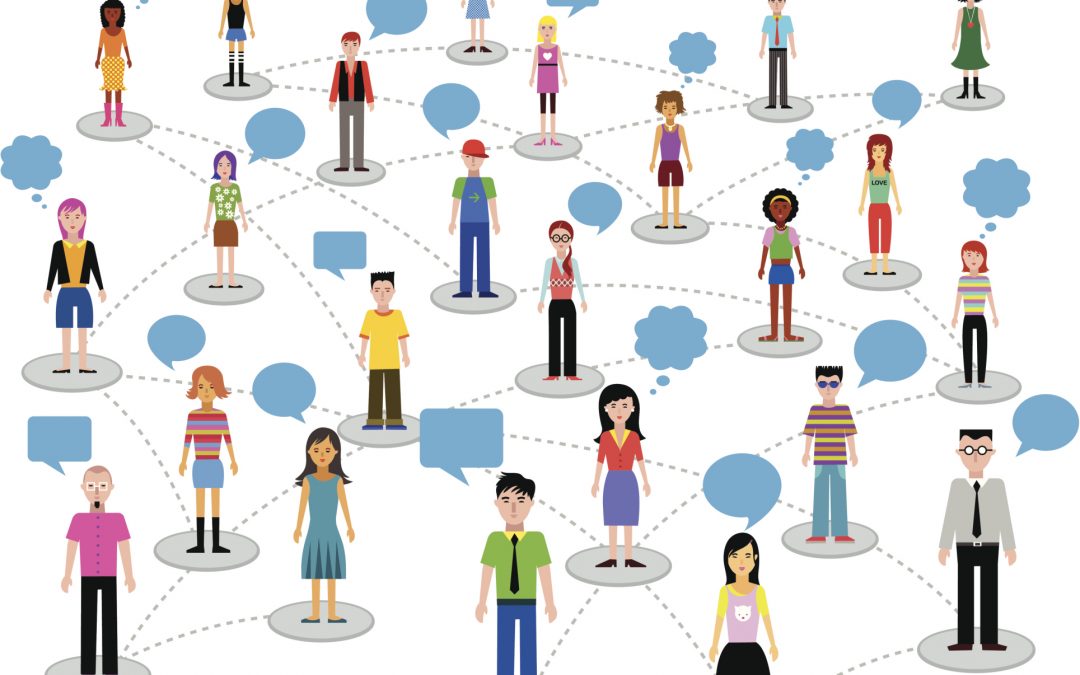
by Fronetics | Dec 16, 2013 | Blog, Logistics, Strategy, Supply Chain, Talent
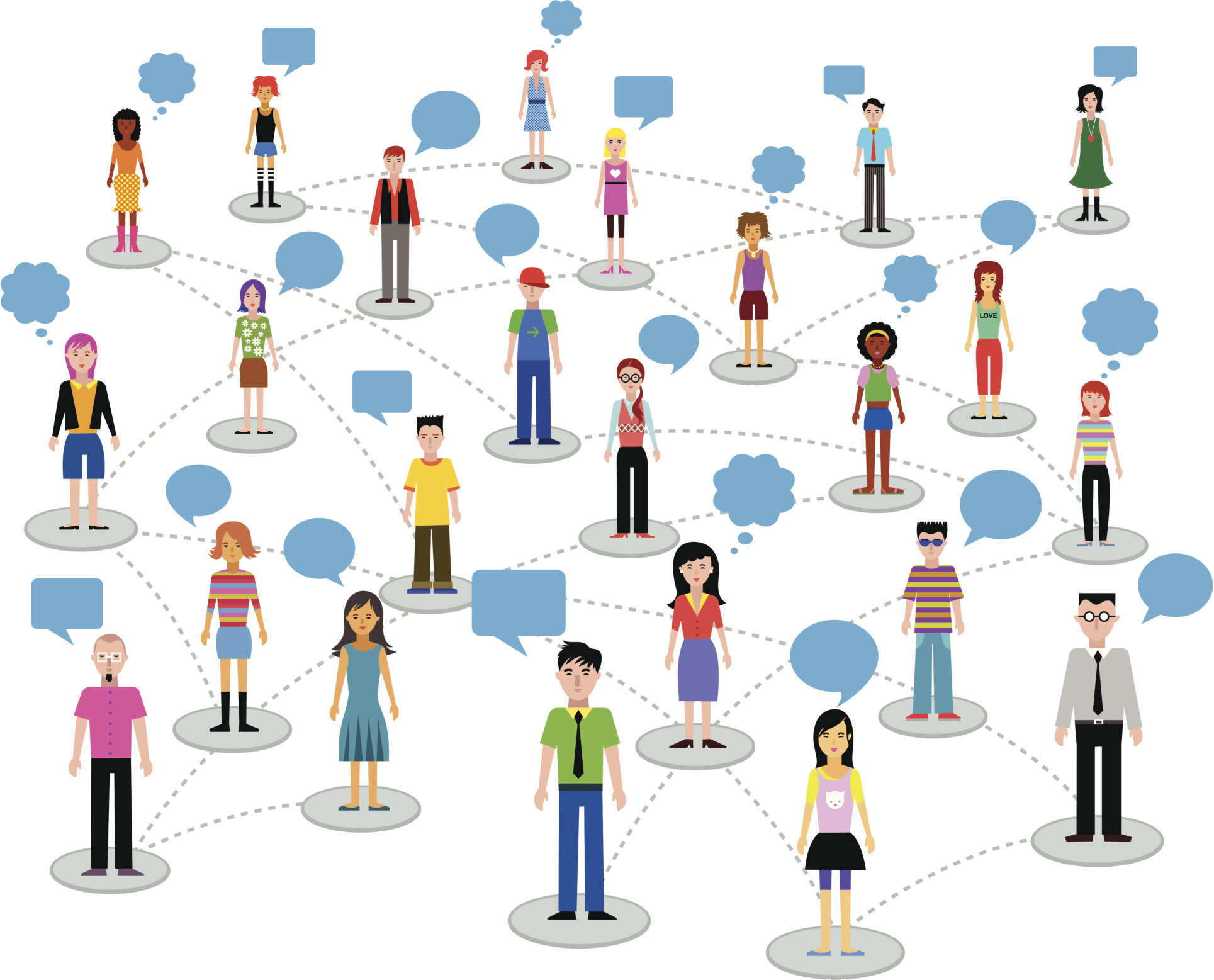
Kathryn Minshew, founder and CEO of The Muse and The Daily Muse, began a piece for the Harvard Business Blog Network with this sage advice: “Network Your Face Off.” The truth and value of this statement cannot be underestimated. Here are 5 reasons why networking is essential and why connections matter.
1. The larger the network the larger the salary
A recent study of 6,000 executives in over 3,000 firms found that the more connections an employee has, the greater the salary. Specifically the study found that a 50 percent increase in network size accompanies a 3.8 percent increase in salary with respect to the average.
2. Networks beget jobs
A survey conducted by The Adler Group found that 46 percent of active candidates and 49 percent of passive candidates found employment thanks to networking. Similarly, a study conducted by Banque de France and the University of Toulouse noted that half of all jobs in the United States are filled through personal contacts. ABC News cites an even higher number – according to ABC News, 80 percent of jobs are landed through networking.
3. Networks bring opportunities
The opportunities networks can bring include: partnerships, invitations to events, introductions, and invitations to give talks and presentations. In short networks bring opportunities that benefit and feed your career, professional development, and personal interests.
4. Networks make you smarter
Knowing what is happening in your field and industry is vital. When you have a strong network you are more likely to be “in the know” than those who do not have a strong and active network.
5. Networks make you happy
Minshew writes: “Networks are powerful, and when done right leave you surrounded by a core of individuals who are all rooting for your success and happy to help you.” So true.
Networking is essential. Get out there and build your network.

by Fronetics | Dec 11, 2013 | Blog, Leadership, Strategy, Talent

Source: CrossFit Full Potential
CrossFitters recognize that good outcomes only come with hard work, and lots of it. For that reason, it generally attracts people who are willing to make sacrifices and go the extra mile to get results both in the gym and at work.
If you want to hire top performers who have staying power hire people who do CrossFit. Here are eight reasons why CrossFitters make great employees.
1. They are able to work with a variety of people
In business it is essential to be able to work with a variety of different people – people within different departments, at different levels within the company, even across various industries. However, many employees don’t have this capability and they fall flat. CrossFitters excel in this area. On a typical day a CrossFit class is comprised of people who have attended just one class and people who have been religiously attending CrossFit for several years, ex-Marines, pregnant women, people in their 20’s, and people in their 70s. There are people who have been athletes their whole life and people for whom CrossFit is their first foray into an active lifestyle. Because there are such a variety of people at CrossFit, when team or partner work comes into play it is essential to, seamlessly, be able to work with anyone and everyone.
2. They are willing to try new things
Business is ever evolving. In order to stay competitive it is essential that your business is willing to try new things, to be inventive, to be creative, and to be able to be willing to change. An employee who is unwilling to try new things becomes a barrier to change and to the evolution of your company. CrossFit is about trying new things and not getting bogged down with routine; CrossFitters train to be ready for the “unknown and unknowable.”
3. They are willing to go beyond their comfort zone
A step beyond trying new things is stepping outside of the comfort zone. Going beyond the comfort zone involves risk and can lead to failure. Because of this, many employees are unwilling to go beyond their comfort zone. However, employees who are willing to take this leap are typically those who bring creativity, drive, and innovation to the company. CrossFit encourages people to go beyond their comfort zone and, by nature, the majority of CrossFitters leap at this chance.
4. They can recognize their limits
Everyone has their limits. An employee who is able to recognize his or her limits is much more effective and efficient than an employee who cannot recognize their limits. If your employee knows the right time to ask for help your guidance you are lucky. CrossFitters are adept at knowing their limits; in CrossFit knowing your limits is essential in that going beyond can result in injury.
5. They are willing to tackle seemingly insurmountable problems
Many employees tackle the small problems and leave the big ones alone hoping someone else will take them on. Or, even worse, some employees are so focused on the small problems they don’t even notice that there are bigger problems which need to be addressed. Each workout of the day (WOD) presents seemingly insurmountable problems. That CrossFitters choose to do an activity which consistently presents participants with seemingly insurmountable problems tells you a lot about the drive of CrossFitters.
6. They like challenge
Employees who like to play it safe and easy are not going to be top performers. If you want top performers, look for employees who embrace challenge. CrossFitters embrace challenge. For example, a couple weeks ago the WOD was to, as a team of three, deadlift 25,000 pounds. My team was comprised of an ex-professional hockey player, a woman in her 30’s who was relatively new to CrossFit, and me (5’1” and not easily mistaken for the world’s strongest woman). Faced with a big challenge and a diverse team (see #1) – we dove in…headfirst.
7. They work hard
Dan Vadala, business consultant and owner of CrossFit Full Potential, describes the work ethic of CrossFitters: “CrossFitters recognize that good outcomes only come with hard work, and lots of it. For that reason, it generally attracts people who are willing to make sacrifices and go the extra mile to get results both in the gym and at work.” Moreover, Vadala notes that he sees positive transformations in those who do CrossFit: “CrossFit has the capacity to transform people into the types of performers and self-starters that employers are finding harder and harder to recruit.”
8. They are supportive
A good employee will support others through the good and the bad. A supportive employee will be the first to recognize their peers for a job well done, and be the first to provide guidance to those who appear to be struggling. A supportive employee is good for morale and good for your company. CrossFitters are a supportive bunch. I have never participated in another activity in which there has been so much support from so many people. “Nice work!”, and “Well done!” is heard over and over again as are little tidbits of information such as “That looks great, but if you try moving your grip a little you’ll be amazed by what you can do.”

by Fronetics | Dec 2, 2013 | Blog, Marketing, Social Media, Strategy

Not too long ago I did not use Twitter and I relished being able to say that I had never sent a Tweet. I believed Twitter was not applicable to me – I don’t follow celebrity gossip and whereabouts, I don’t like the idea of sharing my personal thoughts and experiences with 232 million strangers, and I have yet to take a “selfie” (much less share it with said 232 million strangers). In short, I didn’t use Twitter because I did not understand Twitter and I had no idea of its value. When I finally decided to remove my head from the sand and take stock of Twitter I was blown away not only by what Twitter really is, but also by my ignorance. Using Twitter for business is essential. If you and your business have not yet taken the plunge into the Twitter pool it is time to grab your trunks and jump.
A 2013 study conducted by the Center for Marketing Research at the University of Dartmouth found that 77 percent of Fortune 500 companies have an active corporate blog. The study also found that rank influences Twitter use – 43 percent of the Twitter accounts are held by companies in the top 200 on the list as compared with the bottom 200 which hold 43 percent of the Twitter accounts. Similarly, 67 percent of the Inc. 500 use Twitter. Looking at small businesses, in 2013 Constant Contact reported that 25 percent of small businesses use Twitter – up from only 7 percent last year.
Why is it important to know who is using Twitter? Because those who are using Twitter are more likely to gain customers than those who don’t. A survey conducted by Market Probe International found that 72 percent of those who follow a business on Twitter are more likely to make a purchase from that business and that 82 percent of followers are more likely to recommend a product or service to friends and family. The survey also found that 85 percent of respondents reported feeling a closer connection to a small business if they follow them on Twitter.
In addition to demand generation, the following are reasons why you and your business should use Twitter:
- Increase market intelligence
- Drive traffic to your website
- Monitor your business and your brand
- Connect with customers
- Manage risk
- Share information
Still skeptical?
SJF Material Handling Equipment is the single largest source for new, used and refurbished material handling equipment in the US. The company has built an extensive and successful social media network – one which uses Twitter – with the objective of increasing sales. The company has 55,797 followers on Twitter (and is gaining 200 to 400 followers each week). Stafford Sterner, President of SJF, says that Twitter enables the company to cover more ground and attract customers from unexpected and often unrelated circles.
Another example is the battle for customers between AT&T and T-Mobile that played out on Twitter. The throw down began when Jay Rooney Tweeted that he was considering a switch from AT&T to T-Mobile.
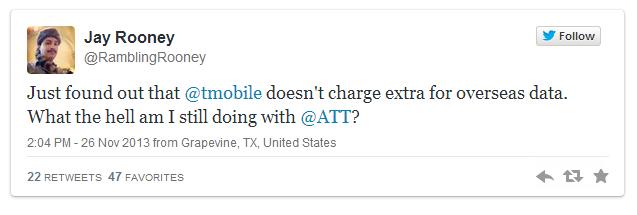
What occurred next was an all-out battle between AT&T and T-Mobile for Jay Rooney (and other customers) – both companies took to Twitter to try to convince Rooney that their company and service is the best. Rooney does a great job of summarizing the exchange:

The battle for Rooney intensifies and T-Mobile’s Chief Executive John Legere jumps in the fray:
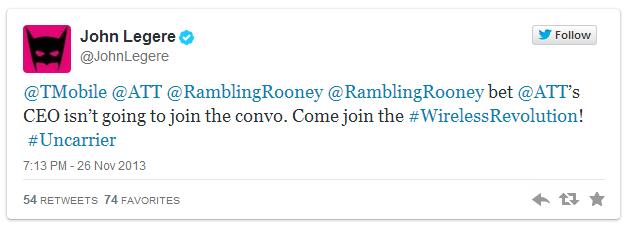
Impressed, Jay Rooney decides to make the jump to T-Mobile. What’s more, the conversation caught the attention of many others. In the end, the exchange netted customers for T-Mobile.
(For more on the exchange, check out ZDNet’s article on battle between AT&T and T-Mobile.)
Ready to take the plunge? Social Media Examiner has a great how to article on how to use Twitter for business and for marketing.
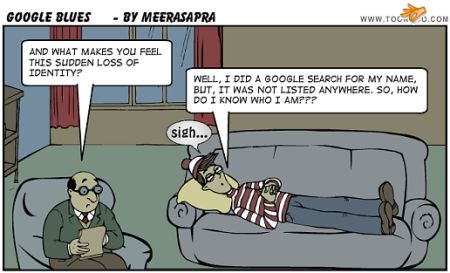
by Fronetics | Nov 25, 2013 | Blog, Marketing, Social Media, Strategy, Talent

First impressions are no longer face to face. Rather, a first impression is now comprised of information which can be gathered via a quick search of the Internet. A first impression can be, for example, inclusive of your LinkedIn and Facebook pages, your personal blog, your Instagram page, your Twitter account, your Klout score, your pins on Pinterest, and anything else that may have made itself onto the Internet. Because of this, that 7 seconds you used to have to make a first impression when you enter the room is gone – chances are that the first impression was made long before you arrived. The reality is that when you walk into that room you are likely being evaluated against the first impression that was made prior to your arrival.
In today’s world you are a brand. Like it or not, if you want to be successful you need to not only recognize this reality, but you also need to take steps to build and enhance your brand. Here is how to brand yourself.
1. Define your brand
In short, a brand is a story. What is your story? Take the time to sit down and look at where you have been and where you are. Where you want to be? What is your skill set? What experiences do you have? How are you unique? Take all of this information and knowledge and define your brand – define your story. Be clear, be concise, and be direct. If you can’t define you as a brand in a sentence or two, you have lost an opportunity.
2. Take stock
What information is “out there”? Start by making a list of all the social media accounts you have – even if you no longer actively use them
Next, Google yourself. What do you find? As G.I. Joe says, “Knowing is half the battle.”
3. Define a strategy
At this point you have a brand and you know what information about your brand is publicly available. Is the information enhancing or hurting your brand? What steps can you take to strengthen your brand? For example, should you adjust your privacy settings on some of your accounts so that personal information and exploits are not available for all to see? Does your LinkedIn page need to be updated? If you don’t take the time to define your strategy you will not be able to execute it effectively.
4. Take action
Frank Cavallaro recently wrote about moving from strategy to execution. He wrote: “Strategy is about making choices. Execution is about getting down and dirty so that those choices can produce results.” Don’t stop at creating the strategy – execute. And remember, the Internet is not static. What information about you has been added? Furthermore, it is important to periodically look at your brand. Is it still representative of where are and where you want to be? If not, take the time to re-brand yourself.
When you take the time to brand yourself you have the opportunity to define that first impression.











